Exploring Pelagic Biodiversity of the Gulf of Alaska and the Impact of Its Seamounts
Using a Diverse Set of Collection Tools to Sample Zooplankton and Micronekton Diversity in the Gulf of Alaska Seamount Province
One of the main objectives of this expedition was to generate species inventories and characterize the vertical distribution of poorly known deepwater fauna around two seamounts in the Gulf of Alaska: Giacomini and Quinn. To meet this objective, the team used a variety of tools to survey the diversity of small animals (zooplankton and micronekton), like fish, crustaceans, gelatinous animals, and squid, at deep depths in the water column of the northern Gulf of Alaska. These tools included three types of plankton net systems, acoustics, and an underwater imaging platform.
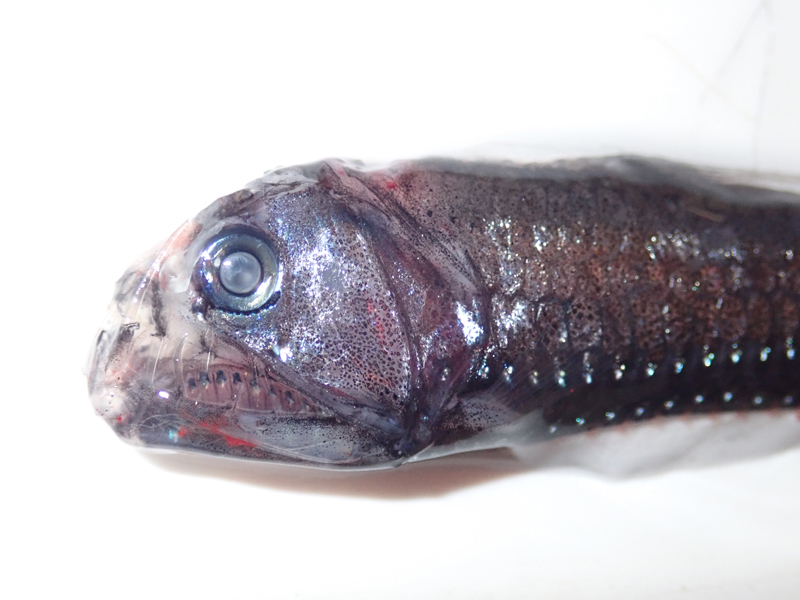
Sampling With Nets
Together, the three plankton net systems — a Hydro-Bios MultiNet system, a Multiple Opening/Closing Net and Environmental Sensing System (MOCNESS), and a Methot trawl — were used to collect organisms of varying sizes and at varying depths.
The team used the MultiNet system and MOCNESS to create a vertical profile of the water column that showed which organisms occupied which depth layer(s). Both of these net systems are equipped with multiple nets and are designed for “depth-stratified sampling,” which enables the researchers to open and close nets independently of each other at specific, consecutive depths (or strata), without overlap, during a single deployment. But, they have their differences.
The custom-built, tandem MultiNet system consisted of two frames with five nets each (i.e., ten nets total) deployed vertically from the stern of the ship. To catch small organisms, like gelatinous zooplankton and small copepods, these nets had a very fine mesh (0.15 millimeters, 0.006 inches) and a small mouth (0.25 square meters, 2.7 square feet). While water filtration is limited by the size of the nets, the tandem design allowed for two simultaneous collections at each depth, increasing the sample volume and eliminating the need for a second deployment. Fine mesh nets and vertical deployment tend to be relatively gentle on organisms, so individuals collected with the MultiNet system were generally in good condition.
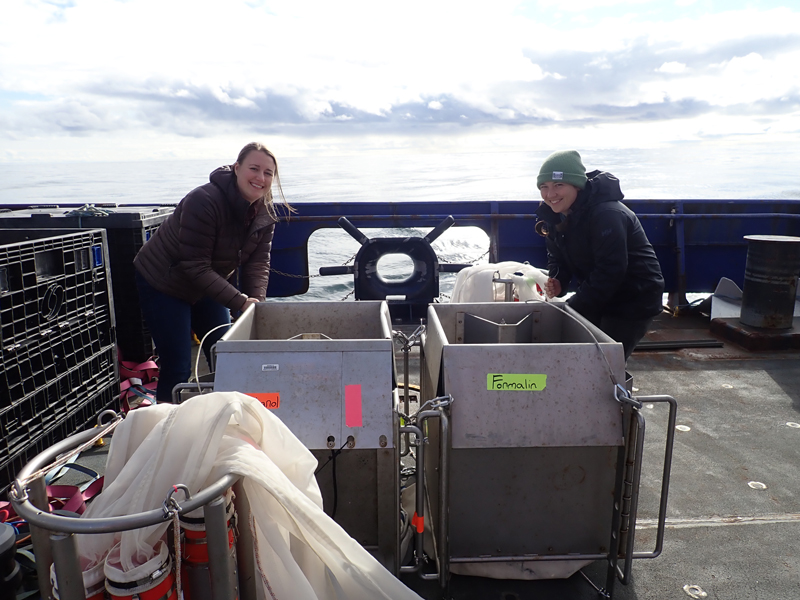
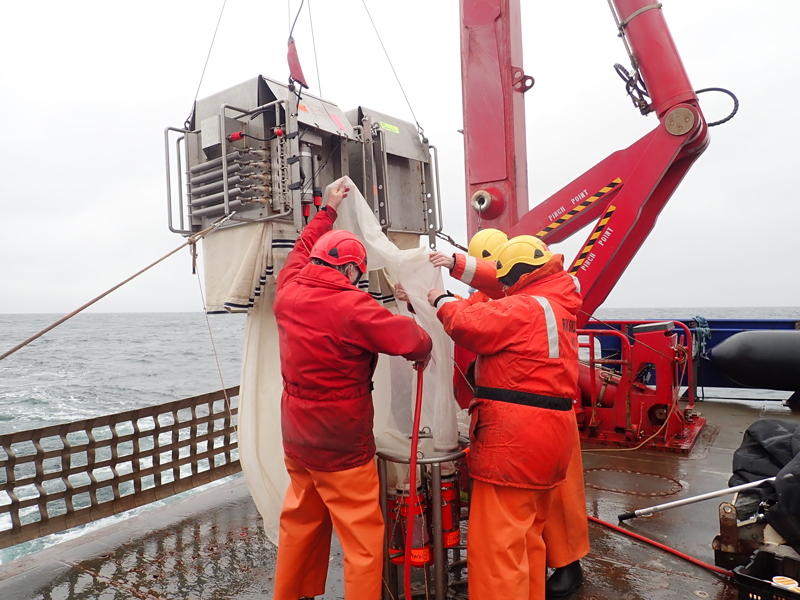
The 10 MOCNESS nets had a coarser mesh (0.505 millimeters, .02 inches) and larger mouth (1 square meter, 10.8 square feet) than the MulitNets, and the system was towed through the water behind the ship rather than being vertically deployed. Its design and method of deployment enabled collection of larger organisms, like copepods and euphausiids, but also resulted in more damage to fragile organisms.
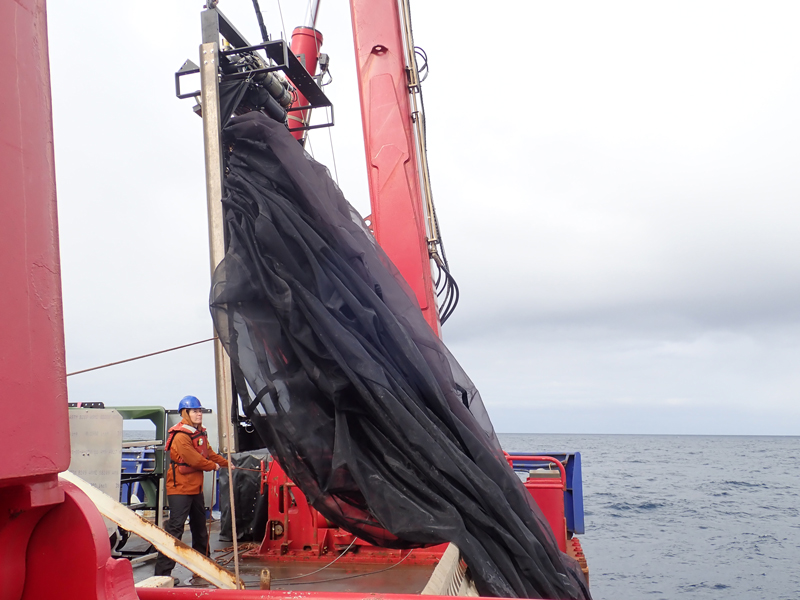
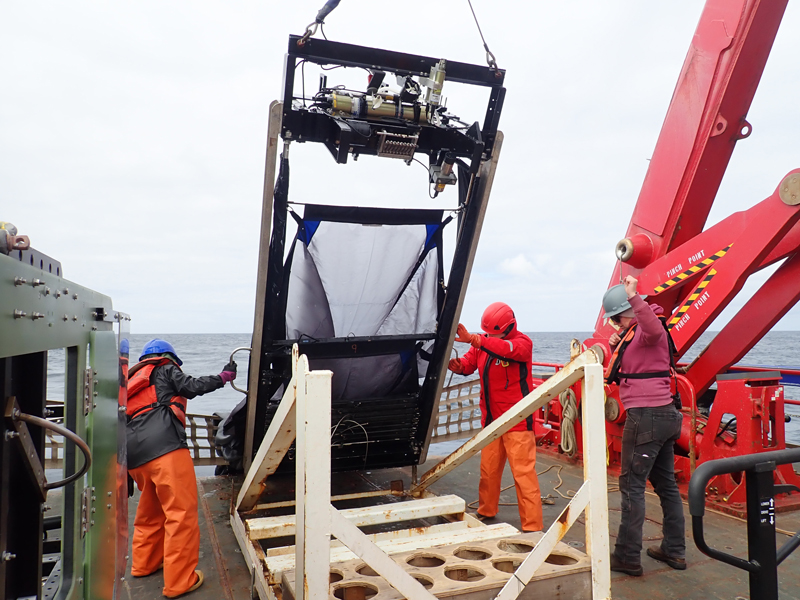
In contrast to the MulitNet and MOCNESS, the Methot trawl is a single net towed obliquely from the ocean surface to depth. With a larger mesh and mouth than the other two systems, it is able to catch larger organisms and filter a larger volume of water, which results in the collection of a more complete range of taxa, including large euphausiids and micronektonic fish. Despite its size, the Methot trawl was surprisingly gentle on organisms, and the individuals it collected often had little to no damage.
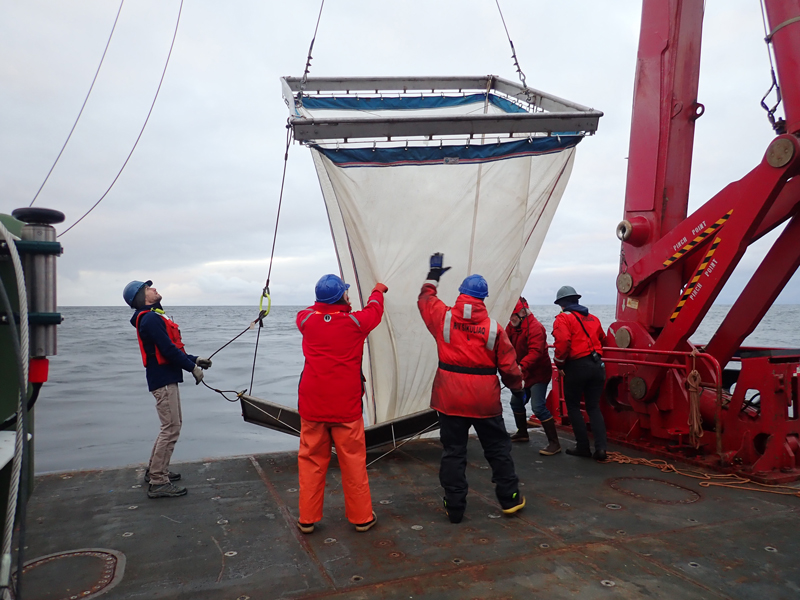

Sampling With Sound
What is learned about zooplankton and micronekton biodiversity by sampling with nets can be enhanced through the use of active acoustics, or sonar. Active sonar is a noninvasive sampling technique that involves sending sound waves down through the water column and analyzing the echoes that bounce back. Unlike with net sampling, this technique does not allow for instant classification of organisms. It’s through data processing and comparisons with data from net collections that acoustically observed organisms may be classified into functional groups (e.g., fish vs. zooplankton; organisms with swim bladders versus those without) and their echoes mapped, quantified, and sized. During this expedition, the team used sonar systems on the ship as well as on the underwater imaging platform.
Sampling With Imagery
The imaging platform used by the team was a custom In-Situ Ichthyoplankton Imaging System Deep-Focus Particle Imager (ISIIS-DPI). This remotely operated towed vehicle enabled them to “sample” organisms without physical contact in their natural environment. It was equipped with three high-resolution line-scan cameras, two split-beam sonar systems, and environmental sensors to measure depth, temperature, salinity, dissolved oxygen, light levels, and more. Together, these instruments allowed the team to better understand the quantity, type (family, genus, and sometimes species), and size of zooplankton in the water column.
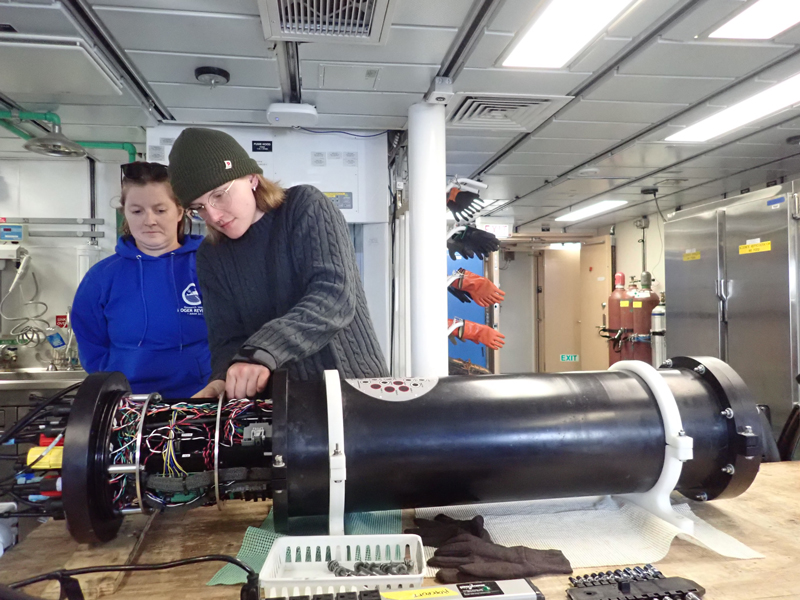
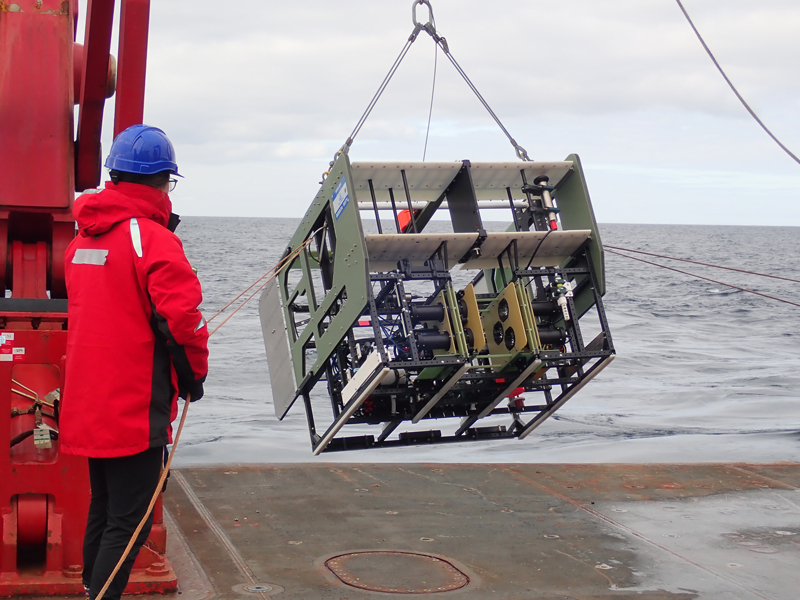
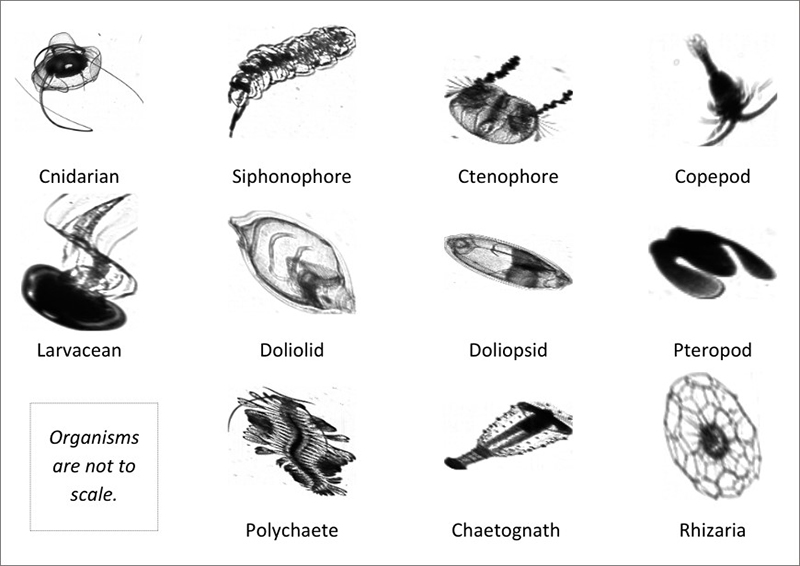
Bringing It All Together
When it comes to accurately characterizing the zooplankton and micronekton communities in the Gulf of Alaska, no one tool can do it all. During this expedition, the team used a combination of sampling techniques (nets, acoustics, and a novel imaging system) to get a broader and more complete picture of the zooplankton and micronekton in the deep waters of the Gulf of Alaska.
By Nina Pruzinsky, NOAA Ocean Exploration/UCAR
Published August 14, 2024